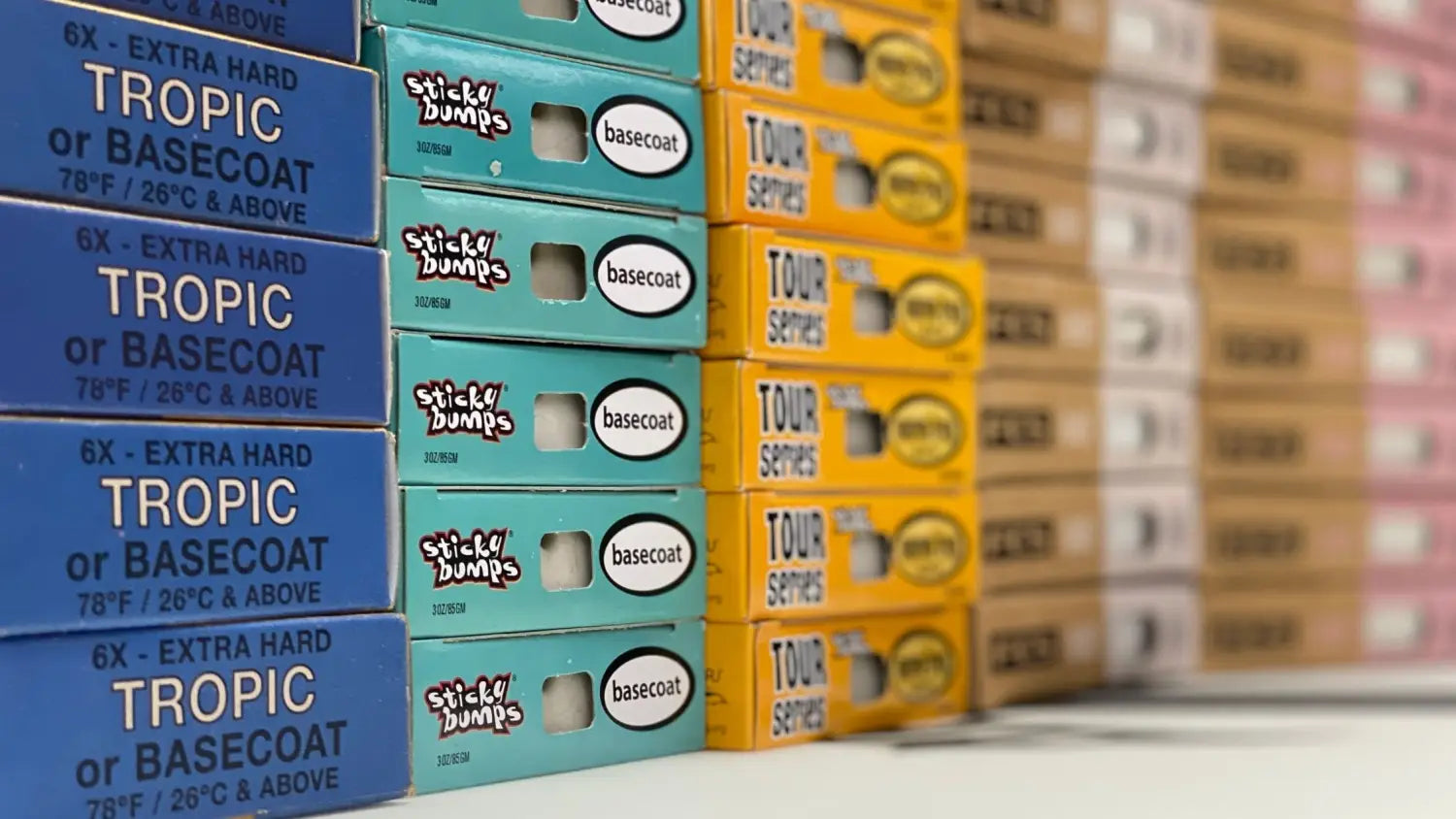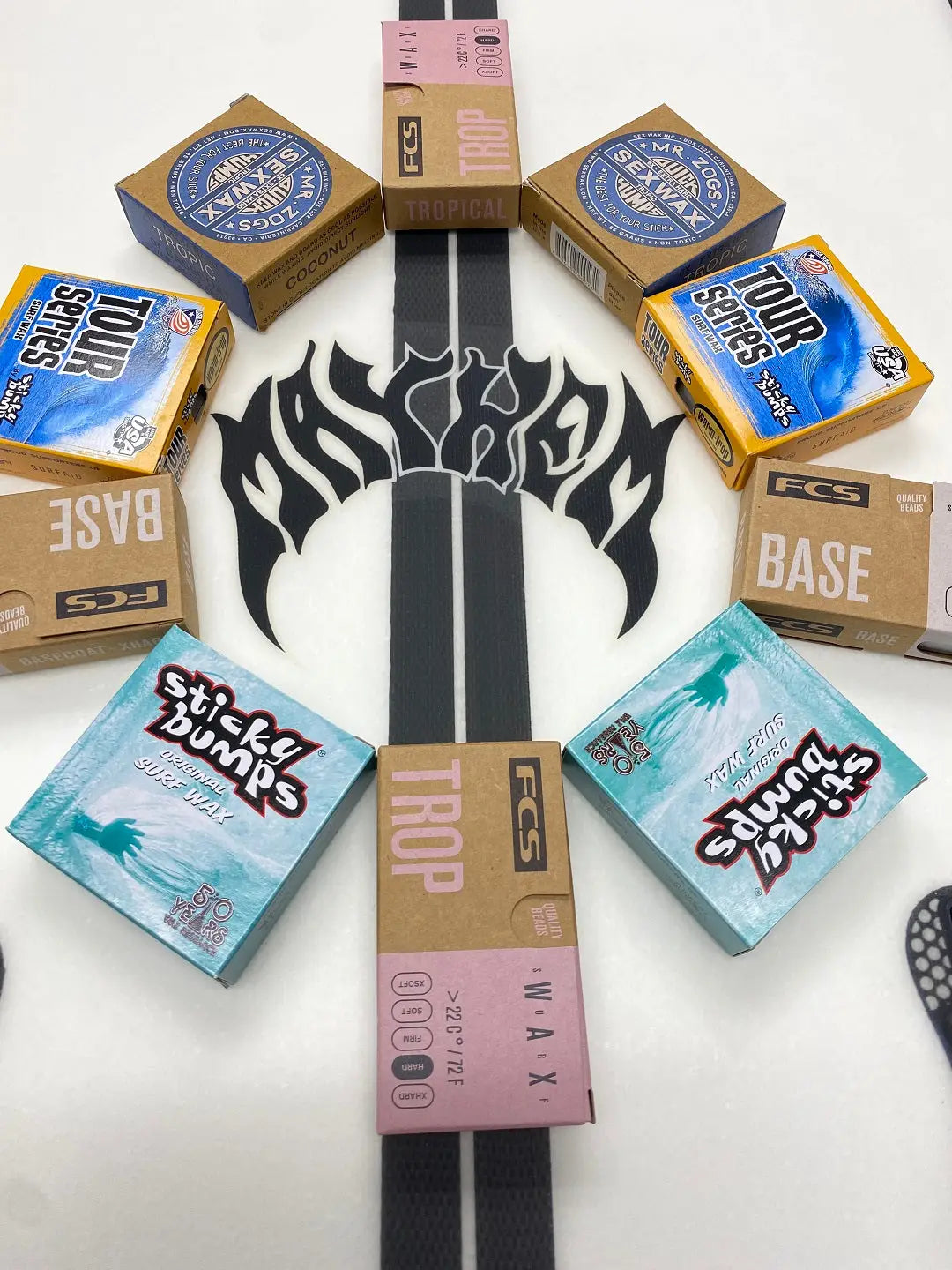What Is Base Coat Wax and How Is It Used?
Share
What Is Base Coat Wax and How Is It Used?

Wax has been a ubiquitous part of the surf experience nearly from the beginning. It is practically mandatory for efficient wave riding since the fiberglass that our boards are made from gets incredibly slippery when wet. Here in Hawaii, we are used to using warm and tropical formula wax, but in cooler places, surfers have long been using base coat in addition to their cool or cold formula surface wax. I have recently had some customers here in Hawaii ask me what exactly base coat wax is, since it has only recently begun to pop up in surf shops here. But to understand base coat, you first have to understand how the temperature of the water affects the wax on your board.
As anyone who has left their board out in the sun knows, wax melts when it gets hot. But you may not realize that surf wax can even melt—or at least soften—when it gets just a little bit too warm. This is why we have different formulas of wax. Tropical and warm water waxes are extra hard, because the warm water of the tropics can melt softer waxes and cause them to get rubbed off of boards. But the opposite happens in cold water, where wax can become so hard that it stops being sticky and instead gets slippery. To combat this, cold and cool water waxes are made softer and stickier. They provide extra grip in cold water, but in warmer water they easily melt and get rubbed off the board, as mentioned above.
The key to successfully using wax while surfing is to match the right formula with the right water temperature, which is why tropical, warm, cool, and cold water wax all have different temperature ranges. Tropical is the hardest and least likely to soften or melt; cold is the softest and stickiest and least likely to “freeze” into a hard, slippery mass. Warm and cool wax lie somewhere in the middle.
The problem with super soft cold water wax is that it is less likely to develop nice wax bumps. It is super soft and sticky, which helps in cold water, but tends to smear and get rubbed off, which doesn’t create a good, long-term base of wax on the board. This is where base coat comes in. Base coat is essentially a super hard formula of wax—similar to tropical formula—that is applied to the clean deck of an unwaxed board to create a “base” of wax bumps. This base is then covered with a second layer of cold or cool water wax (depending on the water temperature) before each session to add some stickiness to the nicely formed (but hard and slippery) bumps on the deck. This can also be done in warm and tropical locations, where it is still a good idea to create a nice, even base of bumps on a new board before surfing it for the first time (or after scraping dirty wax off and reapplying), but generally speaking it is a much more common practice in cold water locations.
Because base coat and tropical formula wax are both extremely hard, they are actually quite similar and can be used interchangeably if necessary. While it is best to use base coat as a base coat (obviously) and tropical wax as your daily top layer, it is technically possible to use tropical formula as base coat in a pinch, just as it is possible to use base coat as a top layer for a quick session in hot, tropical water.

If that all seems confusing to you, then this will probably blow your mind: Even though base coat is a relatively new concept here in Hawaii, we’ve been using tropical wax for decades, which means that we’ve essentially always had base coat on our boards—at least what people in cold water destinations consider base coat!
